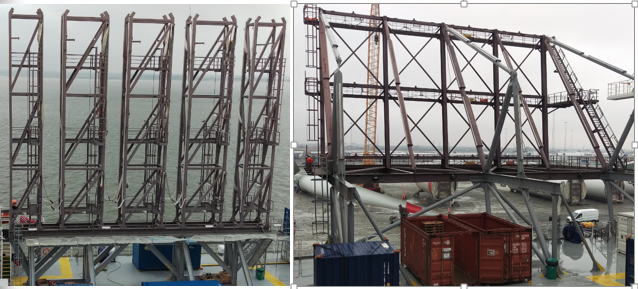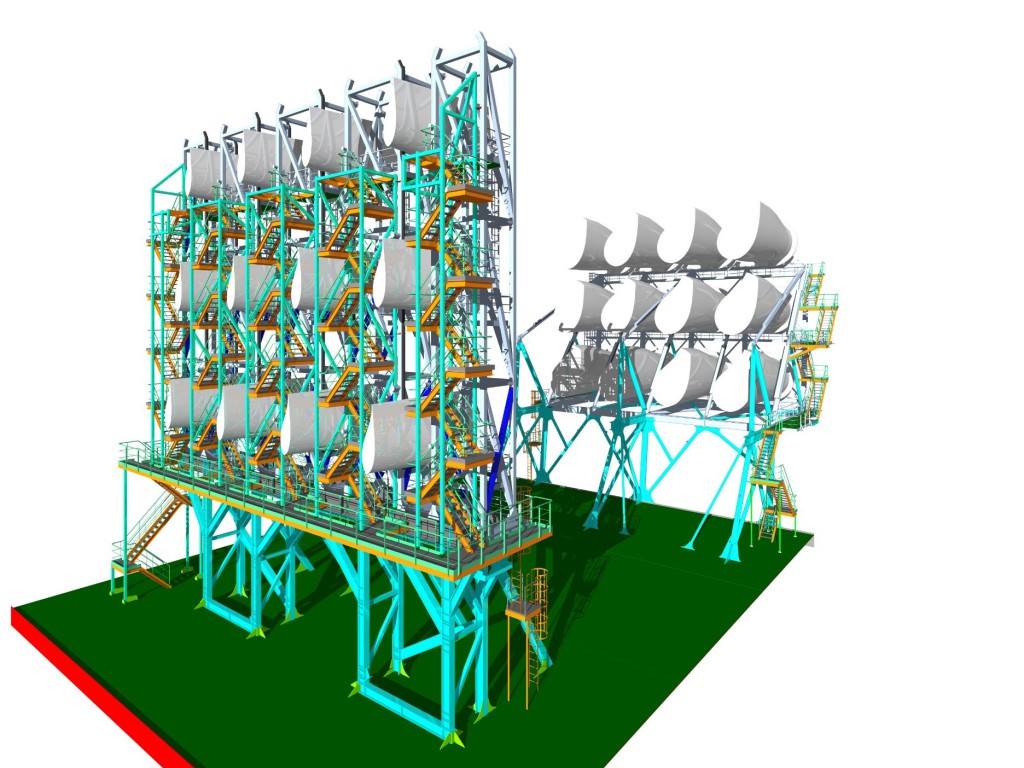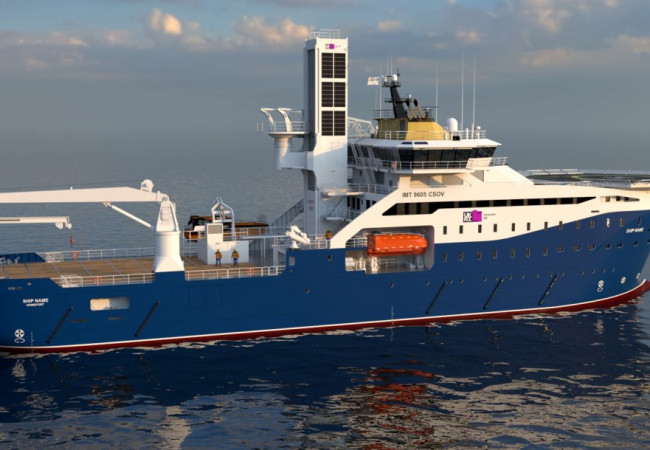Longitude was contracted to undertake naval architectural and structural engineering design and analyses on A2Sea’s jack up installation vessel Sea Challenger, for transportation and installation of Siemens 6.0MW WTG components on the Dudgeon OWF.
After attending the initial kick off meeting and producing the design basis for MWS and client approval, the initial scopes included naval architectural analyses using MOSES software to create a hydrodynamic model of the vessel in order to generate the design accelerations acting at the various component CoG’s for the design seastate, along with blade tip immersion analyses.
The existing nacelle and blade yoke lifting tool grillages were reviewed for the revised project design environmental and motions accelerations loads. A full FEMAP FEA model was then produced for the highly loaded existing WTG tower grillages to analyse the existing grillage and deck structure in way for the new Dudgeon OWF towers (which are project specific), and a custom adapter transition piece designed to allow for reuse of the existing grillage bolt pattern with the new tower pattern.
The main design work was for the blade racks which had entirely new lower base frames and new access arrangements to suit Siemens requirements, including all stairway access to the tip rack and modular portable stair towers for the root rack. A full 3D model of the blade racks along with storyboards were produced to allow for optimising the planning and installation of the new blade rack components (a critical design requirement for these vessels which typically have very tight project schedules with minimised mobilisation times a critical design priority.
On the project side, we also attended the HAZID and HAZOP meetings along with Statoil, Global Maritime and Siemens representatives and produced the design basis for the project scope. The mobilisation was successfully completed with the project now 50% completed and all design works including the modular stair towers working well.







